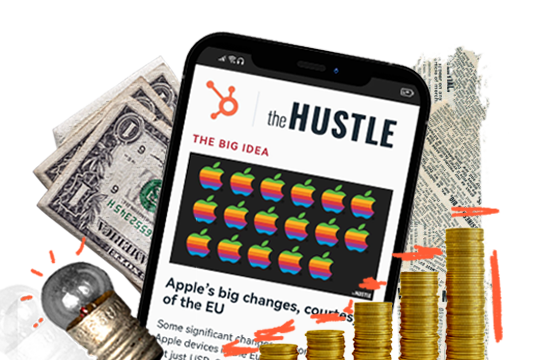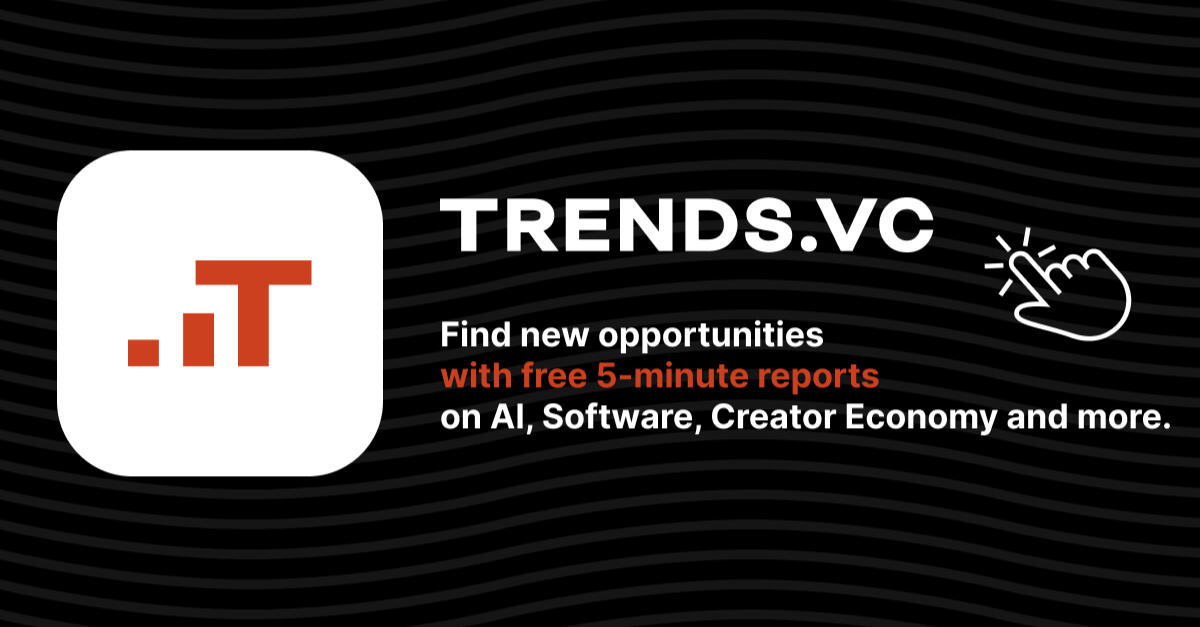- The Modern Warfare
- Posts
- Will Elon Musk's Vision for Autonomous Driving Triumph Worldwide?
Will Elon Musk's Vision for Autonomous Driving Triumph Worldwide?
Tesla’s FSD Odyssey: Navigating the Global Maze of Innovation and Regulation
Paying the bills
Refind - Brain food is delivered daily. Every day we analyze thousands of articles and send you only the best, tailored to your interests. Loved by 510,562 curious minds. Subscribe. |
Links We Like
I think we can start by slowly selling down our 50% share of TokTok + borrowing against our BTC holdings if we didn’t want to sell them. We can then add to this by directing any revenues from land/drilling deals and sales of any RE from all of the abandoned buildings.
This is… x.com/i/web/status/1…
— Chamath Palihapitiya (@chamath)
5:21 AM • Feb 4, 2025
The two biggest barriers to good decision making are your ego and your blind spots. Together, they make it difficult for you to objectively see what is true about you and your circumstances and to make the best possible decisions by getting the most out of others. If you can… x.com/i/web/status/1…
— Ray Dalio (@RayDalio)
3:23 PM • Feb 4, 2025
The Future of Autonomous Vehicles at a Crossroads
Tesla’s Full Self-Driving (FSD) technology has long been touted as the key to revolutionizing transportation. Elon Musk has repeatedly promised that FSD will turn Tesla vehicles into fully autonomous robotaxis, allowing owners to generate revenue from their cars when they are not in use. This vision, if realized, could drastically reshape the transportation industry. However, despite Tesla's advancements in North America, the rollout of FSD in key international markets such as Europe and China has been met with significant obstacles.
From regulatory red tape in Europe to data transfer restrictions and even something as seemingly trivial as bus lanes in China, Tesla's ambitious goal of global FSD implementation faces a complex array of challenges. These difficulties highlight not only the technical limitations of self-driving technology but also the geopolitical and bureaucratic hurdles that can impede innovation.
The Technical Challenge: Can Tesla’s Camera-Based Approach Win?
Tesla's approach to FSD is unique. Unlike competitors such as Waymo, which rely on expensive lidar technology and high-definition mapping, Tesla has opted for a vision-based system that uses cameras and AI to navigate the road. This approach is designed to scale more effectively since it does not require constantly updated maps or costly hardware.
If successful, Tesla’s method could dominate the self-driving market, allowing the company to license its technology to other automakers. However, for this vision to work, Tesla must collect vast amounts of real-world driving data to train its AI models. This requirement is where Tesla is encountering some of its biggest international obstacles.
China’s Roadblocks: A Regulatory and Data Quandary
China is one of Tesla’s largest markets, making the success of FSD there crucial to the company’s long-term strategy. However, Tesla is facing a significant problem: the Chinese government does not allow the export of training video data from local Tesla vehicles to Tesla’s AI training facility in Texas. At the same time, U.S. regulations prevent Tesla from conducting AI training operations in China.
This means Tesla cannot leverage its own fleet in China to improve its autonomous driving software, forcing the company to find alternative solutions. Musk has acknowledged that Tesla is now resorting to publicly available internet videos of Chinese streets to train its AI models. While this workaround may help, it is far from ideal and limits Tesla’s ability to refine its self-driving technology based on real-world driving behavior in China.
Adding to these difficulties, Tesla's FSD system is struggling with one of the most mundane aspects of Chinese traffic: bus lanes. In China, bus lanes operate under complex rules that vary by time of day, and violations result in automatic fines. Tesla’s AI must not only recognize road signs but also interpret them based on the time of day and local regulations. This seemingly simple challenge has proven to be a major stumbling block for Tesla’s vision-based system.
Europe’s Bureaucratic Maze: Regulation Over Innovation
While China’s challenges stem from data restrictions and road rule complexities, Europe presents an entirely different problem: bureaucracy. Unlike the United States, where Tesla has been able to roll out its FSD technology relatively smoothly, European regulators are imposing extensive approval processes that slow down Tesla’s expansion.
Musk has criticized Europe’s regulatory system as a “layer cake of bureaucracy,” pointing out that even supervised FSD—where drivers must remain attentive—requires extensive paperwork and government approvals. The Netherlands, Tesla’s primary regulatory authority in Europe, must first evaluate FSD before presenting it to the European Union for continent-wide approval. This process is expected to take months, if not longer.
In Musk’s words, "America innovates, Europe regulates," reflecting the frustration of companies attempting to introduce disruptive technologies in highly regulated markets. The uncertainty surrounding the timeline for approval furtther complicates Tesla’s ability to plan and scale its FSD program in the region.
Refind - Brain food is delivered daily. Every day we analyze thousands of articles and send you only the best, tailored to your interests. Loved by 510,562 curious minds. Subscribe. |
The Business Implications: Can Tesla Deliver on Its Promises?
Tesla’s $1.3 trillion market valuation is heavily tied to the promise of FSD and its potential to generate high-margin software revenue. Investors are banking on Tesla’s ability to transform its existing fleet into autonomous ride-hailing vehicles, turning ordinary cars into revenue-generating assets.
However, the current challenges in China and Europe raise questions about whether Tesla can deliver on these promises. If Tesla fails to overcome these regulatory and technical roadblocks, it risks falling behind competitors such as Waymo, which already operates fully autonomous taxi services in select U.S. cities.
Additionally, if Tesla cannot expand FSD globally, its long-term business model could be significantly weakened. A Tesla robotaxi network limited to North America would be far less lucrative than a truly global system.
Can Tesla Overcome These Challenges?
Despite these setbacks, Tesla remains determined to push forward with its FSD ambitions. The company has a history of overcoming technological and regulatory hurdles, and Musk remains confident that Tesla will eventually solve these issues.
For China, Tesla's reliance on publicly available video and advanced simulation training may help, but it is unclear if this will be enough to match the effectiveness of real-world training data. If Chinese regulations do not change, Tesla may be permanently handicapped in one of its most important markets.
For Europe, Tesla must navigate the slow-moving bureaucracy while continuing to demonstrate the safety and reliability of its FSD technology. Gaining approval in Europe may take longer than desired, but once achieved, it could open up an entirely new market for Tesla’s autonomous driving software.
Conclusion: The Road Ahead for Tesla’s FSD
Tesla’s Full Self-Driving technology represents one of the most ambitious and potentially transformative innovations in the automotive industry. If successful, it could revolutionize transportation, making autonomous ride-hailing a reality. However, as Tesla’s struggles in China and Europe illustrate, the path to global FSD adoption is fraught with challenges.
In China, regulatory restrictions on data transfer and the complexity of local traffic rules have hampered Tesla’s progress. In Europe, bureaucratic hurdles threaten to delay FSD’s approval for months or even years. These obstacles underscore a fundamental truth: innovation alone is not enough—companies must also navigate political, regulatory, and cultural landscapes to achieve global success.
Tesla’s ability to overcome these barriers will determine not only the fate of its autonomous driving program but also the company’s long-term viability as a leader in the automotive and AI industries. The stakes are high, and while Tesla has a track record of overcoming obstacles, the challenges ahead are some of the most formidable it has ever faced.
If you enjoy this newsletter, please consider sharing it with your friends and business contacts by clicking the button below. ⬇️
Thank you for reading this far. Please share your thoughts and join the conversation in the comment section below.
About The Modern Warfare
We strive to provide insightful and unbiased reporting on the most pressing issues of our time. Subscribe to our newsletter to stay informed and ahead of the curve.
Stay informed. Stay vigilant. Stay ahead.
The Modern Warfare Team
Disclaimer: This newsletter is for informational purposes only and should not be construed as financial or political advice.





